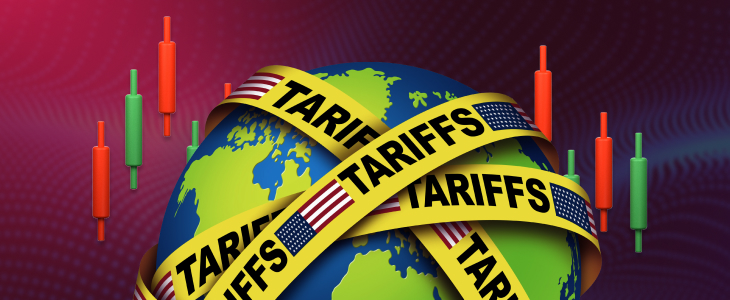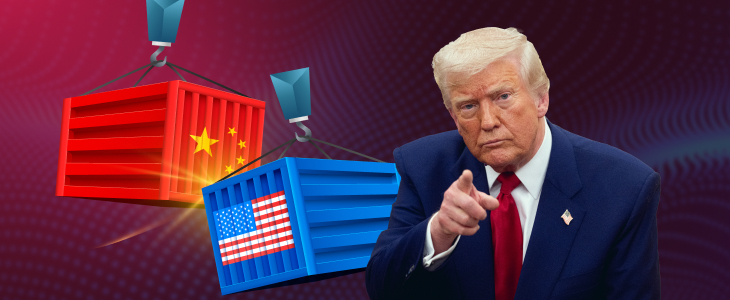One of the controversial and trending topics in the commercial and trading markets is the Trump’s 2025 Tariffs. As the 2025 US presidential election approaches, American President Donald Trump has regained his spotlight with various financial regulations. Following the new traffic protocols has impacted different aspects of goods exportation and importation from other regions.
Also in September 2025, Trump declared various trade proposals, including a ten percent universal tariff and a 60 percent targeted tariff on Chinese products. Moreover, the announcement has caused instant shockwaves through the international finance markets, including the forex platform.
In this article, we will discuss how the Trump Tariffs in 2025 are reshaping the forex market volatility and what it could mean for forex market traders.
The Rise of Protectionism
The Trump’s 2025 Tariffs have signaled the revival of the America First agenda, which was a key component of Donald Trump’s initial term. Additionally, the implementation of the tariffs would lead to a significant change in international trade relations, particularly with China.
Alongside China, the impact can also be observed with various trading partners, including Mexico, the EU, and other countries. Moreover, the currency markets from different regions are currently pricing in various key risks, such as:
- Slower global expansion due to the reduction of trading volumes.
- Emerging input costs for US customers and firms.
- Retaliatory tariffs from other trading partners.
- Probable Fed response to inflationary tensions driven by tariffs.
Instant Forex Market Reactions to Trump’s 2025 Tariffs
The forex market, alongside major platforms like Metatrader 4, has responded effectively since the announcement of the Trump’s 2025 tariffs. For example, you can also follow these reactions:
US USlar: The Two-Force Story
The impact on the US due to the tariff announcement can be observable through various mixed and competing factors, such as:
Bullish Pressure
The Trump’s 2025 tariffs could decrease the US imports by pressuring the trade deficit. You can refer to it as a factor that sometimes supports the dollar value. Moreover, if tariffs can increase inflation, the Fed might delay rate cuts while supporting US dollar yields.
Bearish Pressure
Suppose we follow the bearish pressure, the tariffs can exacerbate the international concerns about shutdowns and endanger investor confidence under US leadership. Additionally, if the currency markets perceive the tariffs as a destabilizing factor, the risk-off sentiment could negatively impact the dollar’s value.

Adverse Effect on CNY or Chinese Yuan Value
As mentioned previously, the tariffs have a specifically negative impact on the value of the Chinese Yuan. Moreover, the tariffs have caused the offshore Yuan to weaken drastically with the emergence of the USD/CNH currency pair. Also, there are various effects on traders that we can notice, such as:
- Capital outflows from China because of weakened trade prospects.
- A probable PBOC response through looser financial policy.
- A basic risk-off sentiment that also affects the rising markets.
Rise of JPY And CHF Currency As Safe Havens
Since the implementation of the tariff, trading pressure has been noticeable, and risk aversion has shifted into the Japanese yen (JPY) and Swiss franc (CHF). It is mainly because these currencies have significantly appreciated against the high-beta currencies. Moreover, you can follow these examples:
- USD/JPY: These currencies returned to their current levels, regardless of the remaining firms’ expectations for US yield.
- EUR/CHF: On the other hand, these foreign exchange currencies have fallen below key support levels as investors, including those from CFD trading, seek safety.
Significant Volatility Catalysts through October
We can notice several scenarios where high volatility is emerging in the trading market, especially in October, and it is mainly because:
Trump’s 2025 tariff Retaliation Risks
Multiple regions, including Mexico, the EU, and China, have announced their retaliation if the United States imposes new tariffs. Furthermore, the currency markets are also pricing in counterattack moves that could cause different scenarios, such as:
- Dampening international trade flows.
- Hurting the export-heavy economies.
- Spurring capital risks from the rising markets.
Polling Volatility
The polling numbers from Trump have become a direct market risk factor for many traders. Moreover, his election victory will also directly impact the market confidence via the narrative of tariffs.
Also, the forex market options are currently indicating the emerging implied volatility surrounding the polling announcements and debate nights.
Central Bank Reactions
The central banks, alongside the Fed, have recently become a tightrope to walk. The tariff-oriented inflation may also prompt the Fed to remain militant as the market expansion halts for the moment.
This factor could also elevate the yield curve and drive the carry trade proportions in the foreign exchange market.
The Wider Implications for the International Forex Market
The forex platform has again started focusing on the long-term suggestions of de-globalization. Additionally, if a society has significant tariffs, partial trade blocs, and capital regulations, it can alter the inclusive infrastructure of foreign exchange market relations.
Moreover, if we talk about the currency valuation models, here is their current status:
- Accounting for less functional trade flows.
- Repricing the recent account predictions.
- Reflecting the enhanced intergovernmental risk premiums.

In Conclusion
Following various tariff proposals from Trump in 2025, they have become more than a political theatre while also impacting the entire formation of the international economic order. Also, the forex market, which is always forward-looking, has already reacted to these new commercial shifts.
For instance, these shifts are generally trade fragmentation, intergovernmental realignments, and inflationary shocks. Moreover, for forex traders, they must primarily remain focused and flexible while adjusting their trading operations in response to these recent tariffs.
Nonetheless, when it comes to trading platforms, a variety of options are available on the market, and one of them is our Fxcess platform. Our platform ensures that our clients receive efficient services through reliable brokers, as well as a wide range of assets and commodities, alongside various affiliated programs. Furthermore, you can also refer to the suggestions from our clients to evaluate our services.
FAQs
1. How can the tariffs impact the exchange rate?
– The tariffs can affect the exchange rate by mainly reducing the import demand for international currency.
2. How can Trump’s 2025 tariffs influence the trading operations?
– The tariffs can impact the trading operations by stimulating the national production and generating government revenue.
3. Who can take advantage of Trump’s 2025 tariffs?
– Domestic or national producers in the tariff-imposing regions can actually benefit from the tariffs.
4. Will emerging tariff rates impact the stock market?
– A prolonged duration of imposed tariffs may affect the stock market significantly.
การปฏิเสธความรับผิด
ข้อมูลนี้ไม่ถือเป็นคำแนะนำในการลงทุนหรือคำแนะนำในการลงทุน หากแต่เป็นการสื่อสารทางการตลาด
